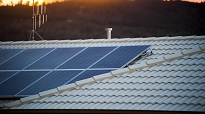Our Distributed Energy Resource (DER) Portal is where solar installers submit and track Special Connection Requests (SCRs) – including applications for solar and batteries.
If you're a solar installer using the DER Portal for the first time you will need to register for an account.
Make and application in the DER Portal
The DER Portal is where solar installers submit SCR applications to apply for new embedded generation systems or change an existing system. All alterations require an SCR application, including warranty replacements of inverters.
The application collects the mandatory information we need to approve the application, and supply to the Australia Energy Market Operator (AEMO). This includes system specifications, settings, and operation modes. You do not need to log into the AEMO DER portal to provide information, we will pass this on to them.
Once an SCR is at commissioning stage, the installer and installation details need to be updated in the portal including voltage readings and inverter photos. Changes to applications will require the application to be withdrawn and amended with the correct details.
The portal can also be used to track applications, communicate with our embedded generation team and update business details.
Application fees
Two types of applications include an application fee:
- Complex embedded generation application (residential) - processing fee available in our Schedule of charges. Complex residential applications are those with a battery, export limit, or additional capacity to an existing system.
- All commercial embedded generation applications – application fees vary depending on system size and complexity.
When a SCR application is made in the DER portal, Evoenergy will send the installer an invoice for the application fee. New PV systems (without a battery) that do not require an export limit, and like for like replacements will not be charged a fee.
Application approval
If the embedded generation system is 30kVA or less, it will be approved in line with our model standing offer. An approval letter will be issued in the Evoenergy DER Portal and a copy should be provided to the customer. For larger systems, once the application has been approved, we will issue a Non-Standard Connection Agreement.
Why we collect DER information
Since December 2019, Evoenergy must share information about every DER connected to our distribution network with AEMO’s DER Register. The AEMO DER Register includes a list of DER locations and specifications in the National Energy Market, including small grid-connected systems up to 30 MW.
DER data also helps us operate the grid more efficiently, prepare for major disruptions, innovate with virtual power plants, and make informed investment decisions.



